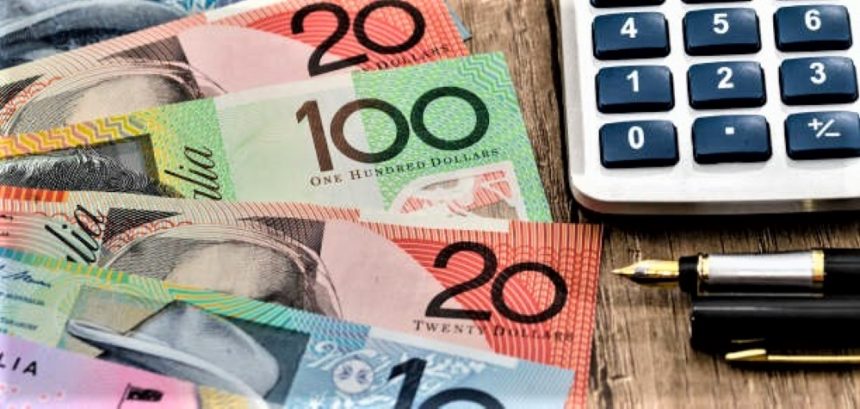Australian dollar appreciates as strong employment data reduces the likelihood of RBA rate cuts in 2024.
On Friday, the Australian dollar (AUD) strengthened against the US dollar (USD) for the second day in a row. The AUDUSD pair has risen mostly as a result of stronger-than-expected domestic employment statistics issued on Thursday, which has caused traders to reduce their expectations of an interest rate decrease from the Reserve Bank of Australia (RBA) this year.
China’s GDP increased by 4.6% year on year in Q3, up from 4.7% the previous quarter.
The Australian dollar may have also received support from confirmation of rate reduction in China, its largest trade partner. China’s Industrial Commercial Bank, Bank of Communications, and China Merchants Bank all announced 25 basis point cuts. Lower interest rates are projected to improve local economic activity, which may increase demand for Australian exports to China.
China’s Gross Domestic Product (GDP) increased at an annual rate of 4.6% in the third quarter of 2024, slightly down than the 4.7% growth recorded in the second quarter but higher than market predictions of 4.5%. Quarterly GDP increased by 0.9% in Q3 2024, up from 0.7% the previous quarter but falling short of the 1.0% anticipated. China’s retail sales in September climbed by 3.2% year on year, surpassing Both the predicted 2.5% growth rate and the previous figure of 2.1%.
The US Dollar (USD) is weakening as Treasury yields fall. However, the US dollar rose to a two-month high of 103.87 on Thursday, boosted by a strong US retail sales report that fanned anticipation that the Federal Reserve (Fed) will enact nominal rate reduction. The CME FedWatch Tool predicts a 25-basis-point rate decrease in November, with a 74.0% chance of another in December.
Daily Digest Market Movers: The Australian dollar climbs as strong labor data reduces RBA rate cuts.
On Friday, People’s Bank of China (PBOC) Governor Pan Gongsheng noted that the Chinese central bank has “given precise recommendations for stock buybacks and refinancing to expand holdings, emphasizing that that credit monies must not be fraudulently transferred into the stock market.”
National Australia Bank reduced its Reserve Bank of Australia (RBA) projections in a letter this week. “We have brought forward our expectations for the timing of rate cuts, now anticipating the first cut in February 2025, instead of May,” according to the bank. They predict a moderate pace of decreases, with rates falling to 3.10% by early 2026.
US retail sales report boosted the US dollar, increasing the chances of the Fed delivering nominal rate decreases.
US retail sales increased by 0.4% month on month in September, exceeding both the 0.1% gain in August and market expectations of a 0.3% increase. Furthermore, US initial jobless claims declined by 19,000 in the week ended October 11, the greatest drop in three months. The total number of claims has reduced to 241,000, well below the expected 260,000.
The seasonally adjusted Employment Change in Australia increased by 64.1K in September, bringing total employment to a record 14.52 million. This considerably exceeded market forecasts for a 25.0K gain, following a revised jump of 42.6K the previous month. Meanwhile, the unemployment rate stayed unchanged at 4.1% in September, matching the revised figure for August but falling short of the expected 4.2%.
On Wednesday, Reserve Bank of Australia (RBA) Deputy Governor Sarah Hunter emphasized the central bank’s commitment to lowering inflation, noting that while inflation expectations remain stable, continued price pressures pose major challenges.
Federal Reserve Bank of Atlanta President Raphael Bostic announced that he expects only one more interest rate cut of of 25 basis points this year.
On Tuesday, Federal Reserve Bank of Atlanta President Raphael Bostic announced that he expects only one more interest rate cut of of 25 basis points this year, as indicated by his predictions at last month’s US central bank meeting. “The median forecast was for 50 basis points more than the 50 basis points already implemented in September.” My expectation was for an additional 25 basis points,” he told Reuters.
Neel Kashkari, President of the Federal Reserve Bank of Minneapolis, soothed markets late Monday by repeating the Fed’s data-dependent strategy. Kashkari echoed common Fed policymaker views on the robustness of the US economy, citing continuous softening of inflationary pressures and a strong labor market, despite a recent increase in the total unemployment rate, according to Reuters.









